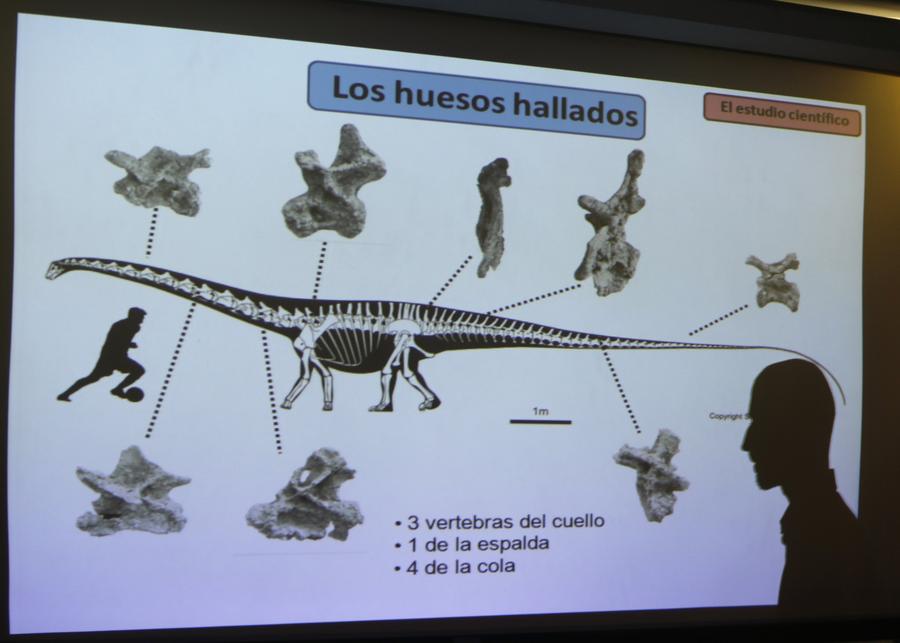 |
| Argentine paleontologist Pablo Gallina casts a shadow on a projector screen showing the found bones of a newly identified South American dinosaur named Leinkupal laticauda in Buenos Aires May 15, 2014. [Photo/Agencies] |
The dinosaur, named Leinkupal laticauda, may be the smallestof the sauropod family called diplodocids, typified by thewell-known Diplodocus, which lived in North America, they said.
It also is the first of them found in South America. Itlived about 140 million years ago, millions of years afterscientists had previously thought diplodocids had disappeared, according to Argentine paleontologist Pablo Gallina, one of theresearchers.
"Finding Leinkupal was incredibly exciting since we neverthough it possible. A diplodocid in South America is as strangeas finding a T. rex in Patagonia," added another of thescientists, Argentine paleontologist Sebastian Apestegua,referring to the North American dinosaur predator Tyrannosaurusrex.
Apestegua called Leinkupal "a very small guy in a lineageof giants."
"We don't know the weight but considering that many of itsbones were very delicate and light and most of its body wasformed by neck and tail, the weight could not be impressive,actually no more than an elephant," Apestegua said.
Sauropods, one of the most successful dinosaur groups, were recognizable for their long necks and tails, huge bodies andpillar-like legs.
Some sauropods like Argentinosaurus, which also lived inArgentina but 50 million years later, weighed up to 90 tons andmeasured more than 100 feet (30 meters) long. The last sauropodslived until the very end of the age of dinosaurs, about 65million years ago.
Diplodocids lived in North America, Europe and Africa duringthe Jurassic period, the middle of the three acts of the age ofdinosaurs, Gallina said. Until now, they were thought to have gone extinct by the end of the Jurassic, about 145 million yearsago.
But Leinkupal shows that this family lived on at least intothe earliest stages of the Cretaceous period.
Diplodocids were more slender than some other families ofsauropods. Their back legs were longer than their front legs,and they boasted extremely long necks and whip-like tails thatthey may have used to fend off predators.
At the time, North America was completely isolated fromSouth America, and the Atlantic Ocean was beginning to open and separate South America from Africa.
Leinkupal lived in a semiarid environment south of a largedesert, the researchers said. Its incomplete remains were foundin Patagonia - a region renowned for its dinosaur finds - in2010 and 2012 in Argentina's Neuquen province, they added.
Its genus name, Leinkupal, means "vanishing family" in theregion's indigenous Mapuche language - signifying thedisappearance of this family of dinosaurs. Its species name,laticauda, means "wide tail" in Latin.
The findings were published in the journal PLOS ONE.